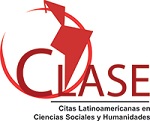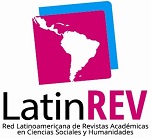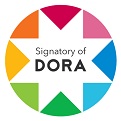Authentic Evaluation to Improve Understanding of Oral Texts in Early Childhood
DOI:
https://doi.org/10.26490/uncp.horizonteciencia.2021.21.905Keywords:
authentic evaluation, oral comprehension, comprehension of oral texts, early childhood, formative evaluationAbstract
The objective of this research was to determine the influence of the application of authentic assessment to improve the comprehension of oral texts in the students of the II cycle of the Experimental College of the province of Lima, Peru. The design used is quasi-experimental, there was a sample of 50 students between boys and girls aged 5 and 6, distributed into 25 boys and girls for the control group and 25 for the experimental group, the data were collected by of an Adhoc questionnaire of 16 items based on the dimensions, inference, reflection, recovery and organization and active listening, likewise the instrument was submitted to expert judgment fulfilling the essential requirements, which are (0.82) of high validity , reliability and objectivity. Cronbach's Alpha coefficient has an average index reached per item of 0.907. It was concluded affirming that the application of authentic assessment significantly influences the comprehension of oral texts of the students of the second cycle of the sample in question, favoring the development of the comprehension of oral texts in boys and girls of early childhood, having as a product the quality performances of oral comprehension.
Downloads
References
Ahumada, P. (2005). Hacia una evaluación auténtica del aprendizaje. México: Paidós. https://pedagogiauniversitaria.wikispaces.com/.../LA+EVALUACIÓN+AUTÉNTICA+
Ausubel, D. P. (1976). Psicología educativa. Un punto de vista cognoscitivo. Ed. Trillas.
Barriga, F. y Barroso, R. (2014). Diseño y validación de una propuesta de evaluación auténtica de competencias en un programa de formación de docentes de educación básica en México. Perspectiva Educacional. Formación de Profesores, 53(1), pp. 36-56. https.//dx.doi.org/10.4151/07189729
Brow. S. (2015). La evaluación auténtica: el uso de la evaluación para ayudar a los estudiantes a aprender. Relieve, 21(2). 1-10. file:///C:/Users/PERU/Downloads/7674-21611-1-PB.pdf
Cassany, D., Luna, M. y Sanz, G. (1994). Enseñar lengua. Graó.
Castillo, M., Hernández, L. y Rivera, A. (2016). Reflexiones sobre la evaluación auténtica en relación con la competencia escritural en inglés. En N. Herrera. (2016). Aprendizaje y evaluación auténtica. Bogotá: Universidad La Salle. http://biblioteca.clacso.edu.ar/Colombia/fce-unisalle/20170114112848/aprendizaje_y_evaluacion_autentica.pdf
Coira, C (2008). Oralidad. Aprender a escuchar. Quehacer educativo. 80-82. file:///C:/Users/USER01/Downloads/90b6750d_91-014_incial%20(1).pdf
Condemarín, M. y Medina, A. (2000). Evaluación de los aprendizajes: un medio para mejorar las competencias lingüísticas y comunicativas. Chile: Ministerio de Educación de la República de Chile.http://www.datoanuncios.org/images/Evaluacion_Apredizajes.pdf
Díaz, F. (2006). Enseñanza situada: vínculo entre la escuela y la vida. México: McGraw-Hill.
ESCALE (2017). Censo Educativo y Censo de DRE/UGEL. Matrícula, Docentes, Recursos y Local Educativo del Censo Educativo y Censo de DRE/UGEL. http://escale.minedu.gob.pe/resultado_censos
Espinosa, A. M., Chapí, F. Fernández, M. Francés, I. Martínez, M. Ruiz y J. Ugarriza (2000-2001). Evaluación del lenguaje oral en el aula, educación infantil y primaria. Ecuador: Portal Educativo Educarecuador. Ministerio de Educación del Ecuador.
Gulikers, J. Bastiaens, T. y Kirschner, P. (2004). Un marco de referencia de cinco dimensiones para la evaluación auténtica. ATR&D, 52(3), 67-86.
Hernández, R., Fernández, C., y Baptista, M. (2010) Metodología de la Investigación (5ª Ed.). México: McGraw Hill Educación.
Ministerio de Educación del Perú. (2015). Rutas de aprendizaje: ¿Qué y cómo aprenden nuestros niños y niñas? II ciclo. Área Curricular Comunicación. 3,4 y 5 años de educación inicial. http://www.minedu.gob.pe/rutas-del aprendizaje/documentos/Inicial/Comunicacion-II.pdf
Ministerio de Educación del Perú. (2015). Currículo Nacional de educación básica.
http://www.minedu.gob.pe/curriculo/pdf/curriculo-nacional-2016-2.pdf
Monereo, C. (2009). La autenticidad de la evaluación. En M. Castelló. (Coord). La evaluación auténtica en enseñanza secundaria y universitaria. Edebé - Innova universitas
Monereo, C. (2003). La evaluación del conocimiento estratégico a través de tareas auténticas. Pensamiento Educativo, 32, 71-89. file:///C:/Users/PERU/Downloads/Laevaluacindelconocimientoestratgicoatravsdetareasautnticas_Monereo.pdf
Modi, D. (1991). Construction and standardisation of listening comprehension test. New Delhi: Mittal Publications.
Perrenoud, Philippe (2009). Enfoque por competencias ¿una respuesta al fracaso escolar?. Pedagogía Social. Revista Interuniversitaria, (16), 45- 64. https://www.redalyc.org/articulo.oa?id=1350/135012677004
Ravela, P., Picaroni, B. y Loureiro, G (2017). ¿Cómo mejorara la evaluación en el aula? Reflexiones y propuestas de trabajo para docentes. Magro
Wiggins, G. (1990). The Case for Authentic Assessment. ERIC Digest. http://www.ericdigests.org/pre9218/case.htm
Published
Issue
Section
License
Copyright (c) 2021 Pati Mariela Amancio Escalante, Aquila Priscila Montañez Huancaya, Roxana Marlene Villa López, Rosa Guillermina Dolorier Zapata

This work is licensed under a Creative Commons Attribution-NonCommercial 4.0 International License.
















